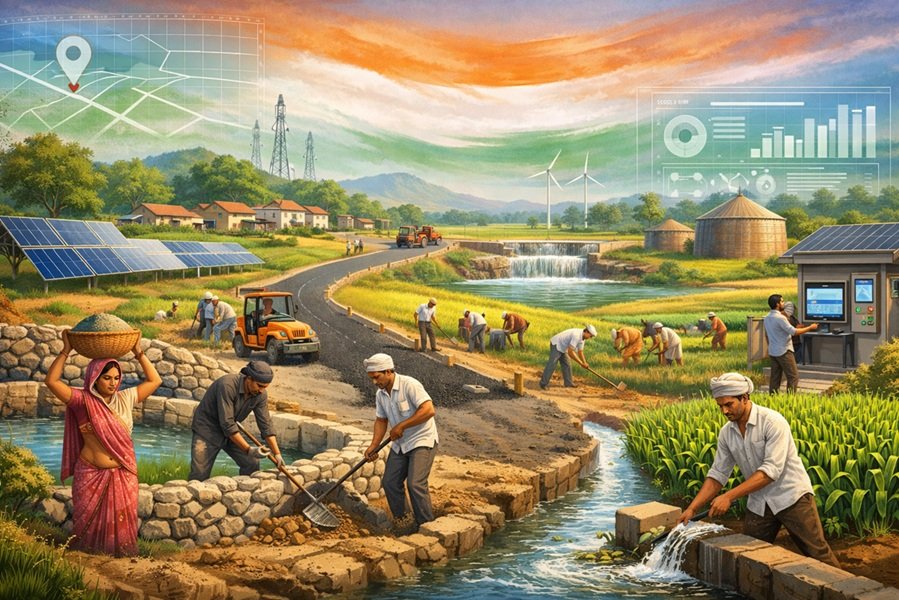
The Indian Constitution is a monumental document that lays the foundation for a democratic and inclusive society. Among its fundamental rights, Article 15 is a key provision that aims to combat social inequalities and promote justice. This article explicitly prohibits discrimination on certain grounds, making it a cornerstone of India’s commitment to equality.
The Text of Article 15
Article 15 of the Indian Constitution states:
“(1) The State shall not discriminate against any citizen on grounds only of religion, race, caste, sex, place of birth or any of them.
(2) No citizen shall, on grounds only of religion, race, caste, sex, place of birth or any of them, be subject to any disability, liability, restriction or condition with regard to: (a) access to shops, public restaurants, hotels, and places of public entertainment; or (b) the use of wells, tanks, bathing ghats, roads, and places of public resort maintained wholly or partly out of State funds or dedicated to the use of the general public.
(3) Nothing in this article shall prevent the State from making any special provision for women and children.
(4) Nothing in this article or in clause (2) of Article 29 shall prevent the State from making any special provision for the advancement of any socially and educationally backward classes of citizens or for the Scheduled Castes and the Scheduled Tribes.
(5) Nothing in this article or in sub-clause (g) of clause (1) of Article 19 shall prevent the State from making any special provision, by law, for the advancement of any socially and educationally backward classes of citizens or for the Scheduled Castes and the Scheduled Tribes insofar as such special provisions relate to their admission to educational institutions, including private educational institutions, whether aided or unaided by the State, other than minority educational institutions referred to in clause (1) of Article 30.”
Key Principles of Article 15
Prohibition of Discrimination
Article 15(1) explicitly prohibits the State from discriminating against any citizen solely on the grounds of religion, race, caste, sex, or place of birth. This ensures equality and protects citizens from unjust treatment based on inherent characteristics.
Accessibility to Public Spaces
Article 15(2) extends this prohibition to prevent discrimination by individuals and groups concerning access to public spaces and amenities. It aims to eliminate social practices of exclusion and ensure that public facilities are accessible to all.
Permissible Positive Discrimination
While Article 15 prohibits discrimination, it also allows for affirmative action under certain conditions:
- Special Provisions for Women and Children: Article 15(3) enables the State to enact laws and policies that specifically address the needs of women and children, recognizing their unique vulnerabilities.
- Advancement of Marginalized Groups: Article 15(4) and Article 15(5) empower the State to make special provisions for socially and educationally backward classes, Scheduled Castes (SCs), and Scheduled Tribes (STs), especially concerning education and welfare.
Judicial Interpretation and Landmark Cases
The judiciary has played a significant role in interpreting and expanding the scope of Article 15. Some landmark judgments include:
State of Madras v. Champakam Dorairajan (1951)
In this case, the Supreme Court invalidated caste-based reservations in educational institutions, stating that such reservations violated Article 15(1). This judgment led to the First Constitutional Amendment, adding Article 15(4) to allow reservations for backward classes.
Indra Sawhney v. Union of India (1992)
This landmark judgment upheld the constitutionality of reservations for Other Backward Classes (OBCs) under Article 15(4). It also introduced the concept of a “creamy layer” to exclude economically advanced sections of backward classes from the benefit of reservations.
Anuj Garg v. Hotel Association of India (2008)
The Court struck down provisions of the Punjab Excise Act, 1914, that prohibited women from being employed in establishments serving alcohol. The judgment emphasized that protective discrimination should not reinforce stereotypes or perpetuate inequality.
Jarnail Singh v. Lachhmi Narain Gupta (2018)
This case clarified the application of reservations in promotions for SCs and STs, reiterating the necessity of demonstrating backwardness and ensuring administrative efficiency.
Positive Discrimination and Its Impact
The concept of positive discrimination under Article 15 has been pivotal in addressing historical injustices and ensuring substantive equality. Examples include:
- Reservation Policies: Affirmative action in education, employment, and political representation has improved the socio-economic conditions of marginalized communities.
- Schemes for Women and Children: Initiatives such as free education for girls and special nutrition programs for children aim to reduce gender disparities and improve child welfare.
- Inclusion in Private Institutions: The 93rd Constitutional Amendment, which added Article 15(5), extended the scope of affirmative action to private educational institutions, ensuring greater access for underprivileged sections.
Challenges and Criticism
Despite its significance, Article 15 faces several challenges:
- Implementation Issues: The effective implementation of affirmative action policies is hindered by bureaucratic inefficiencies and corruption.
- Reverse Discrimination: Critics argue that reservations may lead to reverse discrimination, creating a sense of resentment among non-beneficiary groups.
- Evolving Social Realities: The criteria for identifying backwardness and the scope of affirmative action need periodic review to address changing socio-economic dynamics.
Article 15 in the Modern Context
In contemporary times, Article 15 remains a vital tool for combating discrimination and promoting inclusivity. Recent developments include:
- Gender Equality: Efforts to address gender-based violence, workplace harassment, and representation in leadership roles align with Article 15(3).
- LGBTQ+ Rights: Judicial pronouncements like the Navtej Singh Johar case (2018) have highlighted the role of Article 15 in addressing discrimination based on sexual orientation.
- Economic Criteria: The introduction of reservations for economically weaker sections (EWS) reflects an evolving understanding of affirmative action.
Conclusion
Article 15 of the Indian Constitution is a testament to India’s commitment to creating an equitable society. By prohibiting discrimination and enabling affirmative action, it seeks to address structural inequalities and empower marginalized groups. However, its effective implementation requires continuous effort, vigilance, and adaptation to emerging challenges. As India evolves, Article 15 will remain a cornerstone of its pursuit of justice and equality for all citizens.






